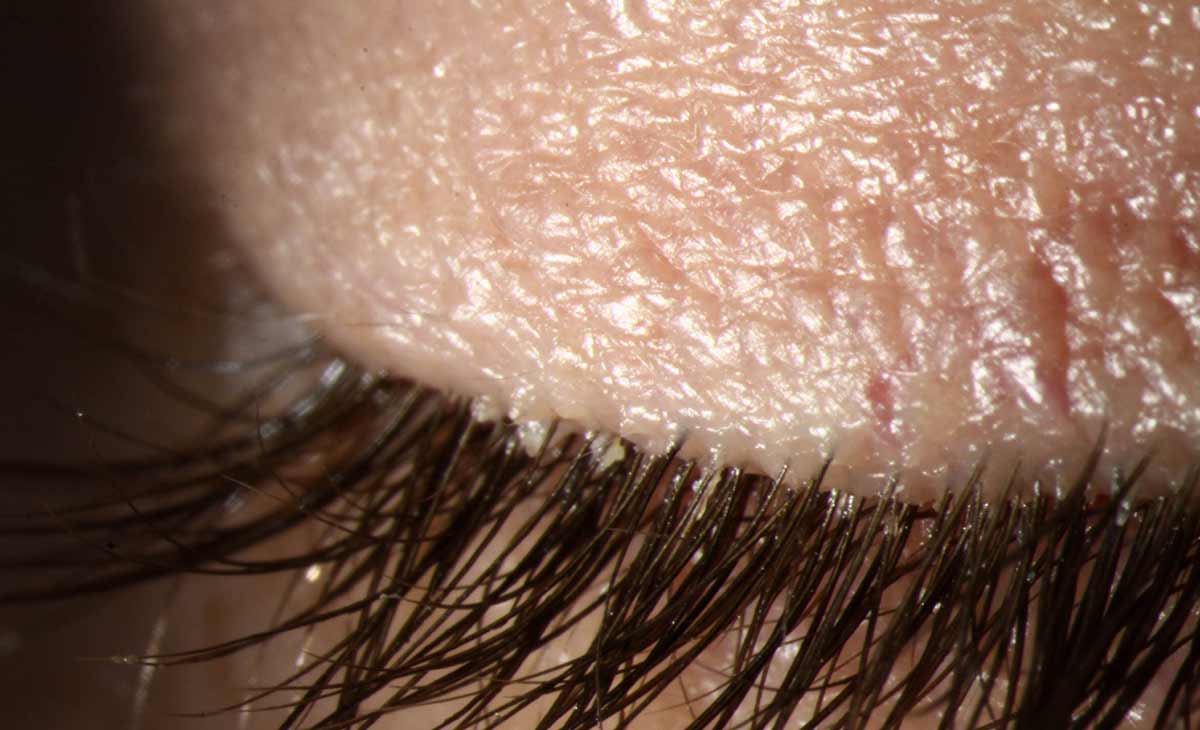 |
| Increased Demodex mite colonization was found in the eyelids of patients who had recently undergone cataract surgery. Researchers suggest that adjusting the postoperative topical steroid dose may help to reduce the risk. Photo: Christine Sindt, OD. Click image to enlarge. |
When patients complain of dry eye and other chronic irritation after cataract surgery, they’re often referred to oculoplastics to rule out lacrimal disease. There may be another suspect at play, however—one more common than previously thought. According to a recent study published in the American Journal of Ophthalmology, infestations of Demodex mites in the eyelids may be behind more of these cases.
The postoperative cataract surgery population lies at the junction of two common Demodex risk factors: older age and immunosuppression. Topical steroids are used for managing several eye conditions, from dry eye to uveitis and beyond. In cataract surgery, this treatment decreases the post-surgical inflammatory reaction and helps to prevent cystoid macular edema. Steroid-related risk factors include elevated intraocular pressure and increased risk for fungal or herpetic infections—and possibly Demodex.
The prospective study included a cohort of 62 patients who underwent cataract surgery (31 males and 31 females; mean age 71). Patients had several eyelashes removed preoperatively, which were then examined by the hospital laboratory for Demodex mites. This same process was repeated three weeks postoperatively. During the postoperative phase, patients received only standard topical steroids.
The researchers reported that the group that was positive for Demodex had a male to female ratio of 2:3. Mite colonization was observed in 22.6% of preoperative samples and in significantly more samples (32.3%) postoperatively. Though the study didn’t include a control group or record the exact number of lashes removed, the increased irritation reported by participants was thought to be caused by Demodex infestation.
The study demonstrated a lower overall mite prevalence prior to cataract surgery and post-op steroid therapy at 22.8% compared with prior studies that showed a prevalence of 87% in 60-year-olds and almost 100% in those aged 70 and older. The researchers suggest these differences may be due to geographic location, sun exposure, housing type and even genetic predisposition.
They concluded that although Demodex colonization doesn’t necessarily cause blepharitis, eyecare providers should be vigilant and maintain suspicion for the mites. “We think that adjusting our approach to future postoperative evaluation of cataract patients by reducing topical steroid treatment to a minimum may be helpful,” they wrote in their paper. “In view of our results, we would also consider checking eyelashes for Demodex in patients after cataract surgery when they complain of unexplained irritation.”
Feldman I, Krausz J, Levinkron O, et al. Is Demodex blepharitis connected with cataract surgery? Am J Ophthalmol. 2023. [Epub ahead of print]. |


